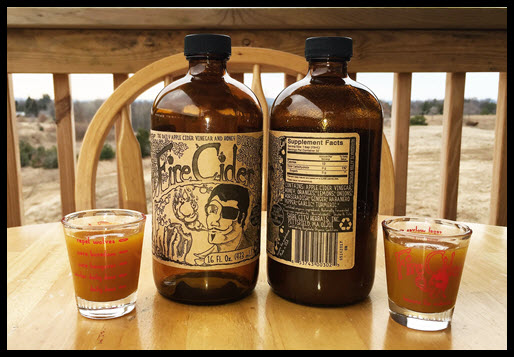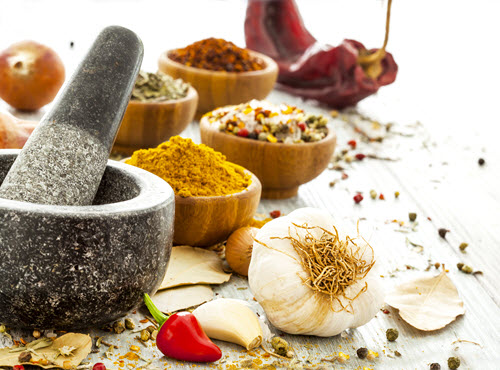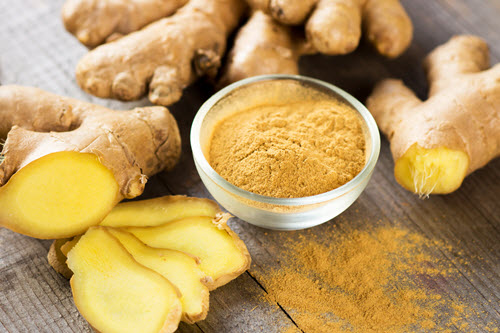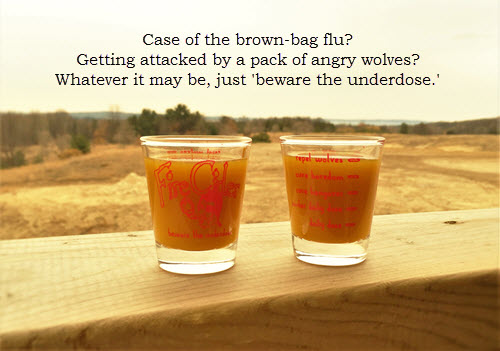The Science of Fire Cider and Oxymels for Health Improvement


“Fire Cider is like a large bear on a cold winter night – A large bear that mauls what ails you!” – Shire City Herbals
It was right after Christmas… and I started to feel off.
You know how it starts – a slightly sore throat, low energy, achy muscles… I decided it was time to ramp up my preventative care, similar to Steve’s Natural Cold and Flu protocol.
So, that’s what I did.
On top of that, I pulled out other common tools, including herbal teas, raw honey, supplements and essential oils.
However, it didn’t seem to matter what I threw at this thing… none of it was helping this time.
It just got away from me and…
Whatever It Was Hit Me Like a Freight Train
I developed full-blown body aches, started sneezing my head off, and my nose began to run like a faucet.
As Sunday unfolded, I became lightheaded and dizzy, weak and hurting all over, and my brain was beyond fuzzy…
I knew I needed my rest, but there’s only so much laying around on the couch watching Netflix one can take, and I knew I needed to do something different or risk getting worse.
I decided a trip to the local health store was in order…
A Christmas Miracle (9 Days Later)
But with zero energy to drive myself, I got a ride from my mom. I entered the store needing a Christmas health miracle, and as I started to describe my issues a new store clerk butted into my conversation.
“Well, you’ve gotta try out this new product we started carrying,” he called out as he ran to the refrigerator.
“We all take a shot of this stuff every day and we don’t get sick.”
Well, “That’s great and all,” I thought, standing there slightly intrigued but with a healthy dose of skepticism.
He started to explain what was in it, reading off the label, rapidly, “Contains: Apple cider vinegar, honey, oranges, lemons, onions, horseradish, ginger…” and too fast for my foggy brain to comprehend.
But then I heard two words that were music to my ears, “Here, let me give you a FREE shot. It’s even made with ORGANIC vinegar, fruits and vegetables.”
I was beginning to open up to him…
“You’ve got me, I’m hooked… Mr. Slick Salesman,” I thought.
“Hold up, this is gluten-free, right?” I asked.
“Sure is,” as he handed me the old-fashioned bottle to inspect.
“Fire Cider… Hmmm…”
Organic ACV, fruits and veggies… check, check and check.
“Alright, let’s do this. I’ll take a shot,” I told him. (I thought, “What’s there to lose?!”)
So, he served me and my mom a shot, speed-pouring it like we’re in some new-aged, “health booze bar.”
I was excited and nervous, to be honest.
As soon as I downed the shot, I instantly started feeling better. My head began to open up, I could breathe out of my nose and I felt a slow and steady surge of energy coming over me.
I felt alive again! (For the first time in 9 days!)
I was still skeptical, so I walked around a bit until I felt sure it wasn’t just a placebo effect.
My gut feeling was, “I think I found my miracle!”
I paid for my stuff and hopped in the car with a bounce in my step. I could’ve even driven if I wanted to… I felt great!
On the Way Home, I Read the Fire Cider Label
Now, usually this is something I’d do before buying and with extreme scrutiny…. But I actually read the Fire Cider label on the way home:
“For centuries, New Englanders have taken a spoonful of honey and apple cider vinegar as a daily tonic. Amy and Dana boosted this heirloom folk recipe with a potent mix of roots and fruits, carefully chosen to support digestive and immune function. Our friends and family take Fire Cider first thing in the morning, after a large meal, or as a daily eye-opener. Others dilute our tonic in their tea or juice.”
And of course a quick disclaimer:
“This product is not intended to diagnose, treat, cure, or prevent any disease.”
Disclaimers are great and all, but I’m here to tell you that I went from feeling like death to cooking up a storm when I got home… as in full-use-of-the-oven-and-stovetop cooking up a storm.
I had my energy back and almost all the pain was gone in under an hour. I stopped sneezing and the congestion started to break up.
I proceeded to take a tablespoon every couple of hours, as suggested at the store. And I started telling anyone who would listen about it.
I was completely out of the woods after about a week of taking it; it had become part of my routine and the flavor was out-of-this-world!
But don’t take my word for it. Check out some first timers who tried Fire Cider and loved it!
Perhaps you’re still not convinced or that video scared you a bit…
Let’s circle back for a short history lesson.
A Short History Lesson (with a Side of Controversy)
Since then, Fire Cider has become sort of a mini-passion of mine… (I’ve been doing some research to say the least.)
As with many recipes, the Fire Cider we have available today has evolved over time and the precise origins are even rooted in a bit of controversy (more on that in a minute).
Hippocrates, the Father of Medicine, developed and used a similar concoction nearly 2500 years ago, called an oxymel.
Speaking of oxymels, as Stephen Harrod Buhner states in his book, Herbal Antibiotics, they “have been used for thousands of years. The basic form is 40 ounces of honey to which is added 5 fluid ounces of water and 5 fluid ounces of vinegar.” Buhner knows a thing or two about herbs and alternative medicine, as he has authored 20 books or more.
You know the 4 Thieves Vinegar story? There are claims this inspired Fire Cider as well.
In the 1950’s, Dr. D.C. Jarvis developed his wildly-successful ACV-honey-cayenne pepper concoction, commonly referred to as switchel or honegar.
Most prominently accepted among the herbalist community, the term ‘Fire Cider’ was coined by Rosemary Gladstar in her “home study course in 1981 and has been copyrighted in her books since 1991,” which is where the controversy really comes into play.
Note: I was originally not going to go there, because I really just wanted you to know about Fire Cider and its benefits. But I decided it’s important and cannot be glossed over to paint a true picture.
Basically, there’s a “trademark battle” going on between the “underground herbal community” and Shire City Herbals (the company that makes and cells Fire Cider.) There’s even an entire website dedicated to forcing Shire City Herbals to remove it and change the name of the product completely.
“Why even bring this up?” you ask.
Frankly, I wouldn’t have known about Fire Cider if it hadn’t been for Shire City Herbals.
Period.
I’m not here to go too deep into my personal opinions and what’s right and wrong when it comes to trademarking supposed “herbal community” products. This is not even close to my forte.
But what I can see is that Shire City Herbals, Inc., based in Pittsfield, Massachusetts, is a relatively small, family-owned and operated company started by three hard-working people. They’re passionate about providing the masses with their world-class product, which started with an explosion of demand following an invitation to sell their Fire Cider at a local festival. And this passion really shows when you check out the rest of their website. Plus, they have a strong focus on sustainability, which is evidenced by the 100% solar-powered warehouse they use.
Alright, enough stories and history lessons… let’s get to the real good stuff, right?
12 Reasons Why I Love Fire Cider So Much
- Is made from 10 raw, organic real food ingredients (aside from the honey – which is still raw). All organic ingredients have been certified by Baystate Organic Certifiers.
- Is preservative and chemical-free.
- Is gluten-free.
- Naturally contains probiotics. If you’ve followed us in the past, you’ll know that it’s important to get as many good bugs from food as you can to support gut and immune health.
- Has a long shelf-life, due to the presence of probiotics. Shire City states an expiration of 18 months beyond the “born on date.”
- Is bottled in old-fashioned, cool looking amber glass, which protects the integrity of the contents. Plus, the entire thing is recyclable.
- Is available in multiple sizes and types of containers (mostly glass). You can get it in 8oz, 16oz, and half or full gallons.
- Doesn’t have to be refrigerated, even though the FDA highly recommends it (and Shire City can’t legally tell you not to.)
- Is easy to take.
- Is versatile – it’s awesome when you can use something in a variety of ways.
- Actually tastes amazing! It might have to grow on some of you, especially if you’re new to ACV. In fact, here’s a video of the Q Brothers trying it out for the first time. Their reactions are priceless (2:31):
- Again, every ingredient is real, you know what they are and you can pronounce the words when you read the label…
Really, I could’ve made this list much longer, but I was eager to jump into the ingredients after number 12.
Fire Cider’s 10 Simple, Real Food Ingredients
How cool is it to look at a label of a pre-packaged product and see a bunch of organic, real food ingredients?
I know I was impressed when I first turned the bottle around and saw that…
Standard Fire Cider simply contains:
- Organic ACV
- *Honey
- Organic Oranges
- Organic Lemons
- Organic Onions
- Organic Horseradish
- Organic Ginger
- Organic Habanero pepper
- Organic Garlic
- Organic Turmeric
*So, what’s the deal with the honey? Why isn’t it organic too? Well, according to Shire City Herbals, it is next to impossible for them to sustainably source organic honey. They also make one with African bronze honey. If you’re just not comfortable about the honey, they actually offer an unsweetened version that’s labeled as USDA Organic as a result. (You could even add your own local honey if you wanted to maximize its benefits.)
Anyway, back to the rest of the ingredients…
And in light of these powerful ingredients, I’d like to bring in our old friend Hippocrates again for a moment. He once said, “Let food be thy medicine and medicine be thy food.”
You’ve probably heard, at one time or another, the benefits of most or even all of these foods… but I’m going to bring it all in one place with lots of research to back it up.
The Science of Fire Cider’s 10 Ingredients

“Each tree, each shrub, and herb, down even to the grasses and mosses, agreed to furnish a remedy for some one of the diseases [of humankind] and each said: ‘I shall appear to help man whenever he calls upon me in his need.’” ~The oral teachings of the Cherokee Nation
Stephen Harrod Buhner states in his book, Herbal Antibiotics, very plainly:
“Plants possess very different medicinal actions depending on: when they are harvested, how they are harvested, if they are dried or fresh, how they are prepared as medicines, how often they are taken, how much is taken, and if they are taken in isolation or combination.”
As previously stated, all ingredients used in Fire Cider are raw – no heating is involved at any time whatsoever.
And while scientists have revealed a lot about what plants consist of calorie, macronutrient and micronutrient-wise, they’ve only begun to scratch the surface when it comes to phytochemicals (beneficial plant compounds).
With all of that said, entire blog sites could be dedicated to each one of these ingredients, and I’ve simply attempted to provide highlights I found to be useful (with some science to back each one).
1.) Organic Apple Cider Vinegar (ACV)
For thousands of years, millions of people have been using vinegar for a variety of purposes.
Here are just a few studies that back up some of its medicinal uses:
- This study showed an increased insulin sensitivity in those with diabetes
- A study in 2015 found that vinegar consumption in patients with Type 2 diabetes improved blood sugar control, insulin levels, and high triglyceride levels
Also, if you’re interested in how to use ACV as a quick heartburn remedy, Steve wrote about it and our favorite brand this post on 4 Quick and Natural Home Heartburn Remedies. One thing to especially note is that the ACV used in Fire Cider contains the mother, which naturally occurs and contains beneficial enzymes and probiotics – and that’s reason alone, in my mind, to incorporate it into your diet.
2.) Honey
Honey is much more than just the only SCD-legal sweetener.
Honey has strong antibacterial properties against “all known forms of resistant bacteria that infect the skin and wounds,” as Stephen Harrod Buhner stated in Herbal Antibiotics.
Also, he goes on to say that honey has the following properties:
- Heals burns and is “the premier wound healer on this planet” (especially infected ones)
- Antifungal, Antiviral, Anti-inflammatory
- Illness prevention and treatment (especially during cold and flu season)
- And a potent immune booster
Many people find the use of honey alone as effective (or more) than antibiotics, especially in the case of resistance. A study on honey and its medicinal property and antimicrobial activity, from the Asian Pacific Journal of Tropical Biomedicine in 2011, goes on to say:
“Microbial resistance to honey has never been reported, which makes it a very promising topical antimicrobial agent against the infection of antibiotic-resistant bacteria (e.g., MDR S. maltophilia) and in the treatment of chronic wound infections that do not respond to antibiotic therapy.”
Note: For those with allergic reactions to bee stings, mild to severe anaphylaxis may occur.
3.) Organic Oranges
Oranges are naturally a high source of:
- Antioxidants, like Vitamin C and Flavonoids
- B vitamins
- Vitamin A
- Potassium
But vitamin C is where I want to direct your attention.
While there are hundreds of studies available that support the intake of fruits and vegetables high in vitamin C, in my opinion this one says it best:
“Vitamin C in humans must be ingested for survival.”
4.) Organic Lemons
Lemons have the amazing ability to support digestion, and more specifically hydrochloric acid production (adequate levels of HCl in the stomach are critical for the proper absorption and digestion of nutrients).
Plus, lemons contain large amounts of:
- Antioxidants
- Vitamin C, much like oranges
- Essential oils in the zest (peel)
- Citric acid, which really supports your body’s ability to detox.
As you can see, lemons are more than just something to squeeze in your water.
5.) Organic Onions
They not only make anything you cook taste better…
Onions contain several healing properties:
- Antioxidant compounds, like flavonoids
- Anti-inflammatory
- And contain ‘heart disease, cancer and diabetes protecting’ sulfur-rich compounds (necessary for the production of glutathione)
Speaking of antioxidants, onions have a high concentration of the beneficial polyphenol flavonoid quercetin (studied for its ability to prevent histamine release).
Researchers, in a 2012 study, published in the Journal of Medical Sciences, concluded that:
“Eight-week supplementation with quercetin-vitamin C was effective in reducing oxidative stress and reducing inflammatory biomarkers including CRP and IL-6.”
6.) Organic Horseradish
Horseradish, a member of the Brassicaceae family (think cruciferous vegetables like broccoli), has a pungent flavor.
You’ve probably used it as a condiment, however traditional cultures have used it for its inherent medicinal value, since (unbeknownst to them) it is such a big source of glucosinolates.
In fact, in this 2015 study, researchers showed that horseradish holds many anti-inflammatory properties and furthermore, this study looked at a high intake of cruciferous vegetables being…
“…associated with a reduced risk of cancer, particularly lung and those of the gastrointestinal tract. This protective effect has been linked to the presence of glucosinolates in these vegetables.”
7.) Organic Ginger

First and foremost, as Buhner explains, ginger is a synergist…
Which increases the actions of other herbs and boosts “their effectiveness by relaxing blood vessels and increasing circulation, thus carrying the active constituents of the other herbs more efficiently throughout the body.”
Stephen goes on to say that ginger has the following properties and uses, among others:
- Antibacterial, antifungal, antiviral
- Anti-inflammatory
- Antiarthritic
- Stimulation of the immune system
Some other great uses for ginger:
- Reduce nausea and diarrhea
- Pain relief
- Reduce fever and chills
- Thin mucus and help move it out of the sinus cavities
Gingerol, a cousin of capsaicin and piperine and the active constituent of fresh ginger, has long been researched. In a study in 2011, researchers looked specifically at gingerol for its possible effectiveness against colon cancer. As with most plant-based trials, results point to further research, but they did provide much hope. They concluded that…
“…gingerol might be a new therapeutic agent i.e. anti-angiogenic agent for the better treatment of human colon cancer, for that further research on gingerol is essential.”
Another peer-reviewed study from Sept 2015, published in PLOS, shows the effectiveness of another ginger component, 6-Shagaol, in inhibiting breast cancer cells, including the ever-elusive cancer stem-cells that most chemo can’t even touch. In fact, the researchers cited 6-Shagaol as being 1,000% more effective than chemotherapy.
The fact that these compounds are even being studied in this way says a lot about ginger’s potential healing benefits in the body.
8.) Organic Habanero Pepper
Habanero peppers, which belong to the chili pepper family (jalepenos, poblanos and bell peppers), are rated in the 3rd highest range on the Scoville scale for heat units. And it’s the active ingredient capsaicin that accounts for the fire you feel on your tongue when you eat them.
If you’ve ever tried a hot pepper, you know that a little goes a long way and that’s probably why it’s 8th on the ingredient list.
But the inclusion of hot peppers is a must. Because without them, we’d just have Mild Cider… and that just doesn’t quite have the same ring to it.
Anyway, I’d like to highlight here that capsaicin is included in many over-the-counter pain relief medications and has been researched quite extensively in the pain arena.
And one of the biggest reasons in my mind, if not the biggest reason, for including habanero peppers, though, is to increase internal body temperature and metabolism. That way you can work up a sweat and help detox the bad stuff faster.
9.) Organic Garlic
Garlic is another one of those foods that makes just about everything taste better. But its benefits don’t stop there…
A 2006 study, published in The Journal of Nutrition, states that:
“Garlic exhibits…
- Hypolipidemic, Antiplatelet, and Pro-circulatory effects
- Prevents cold and flu symptoms (through immune enhancement)
And demonstrates anticancer and chemopreventive activities.”
Also, a 2006 Venezuelan study provides evidence of garlic’s healing properties, as..
“…ajoene is the garlic compound related to more biological activities, as showed in in vitro and in vivo systems. Those studies found that ajoene has antithrombotic, anti-tumoral,antifungal, and antiparasitic effects.”
As you can see, garlic’s claim to fame goes beyond its ability to ward off vampires and werewolves (more on these beasts later).
10.) Organic Turmeric
Turmeric contains approximately 3% curcumin by weight (the main active ingredient and polyphenol responsible for the yellow color) and curcumin has been gaining more and more attention in the world of research.
In fact, this article on turmeric and curcumin provides a thorough listing and description of several research-backed properties:
- Anti-inflammatory, Anti-cancer, Antioxidant
- Boosts Brain-derived Neurotrophic Factor
- Helps reverse and prevent heart disease, arthritis and rheumatoid arthritis
- Fights Alzheimer’s, Depression, and other age-related diseases
While turmeric is last on the list, it is definitely not least. In fact, it’s arguably one of the most important ingredients in Fire Cider.
Fire Cider’s Synergy: Preventative and Healing Potential

While each of these 10 ingredients has incredible healing powers on their own, the synergistic effect of combining them all together in one delicious daily shot is what makes Fire Cider such a phenomenal product, in my opinion.
In case you’re not sure, synergy is defined as…
“…the interaction or cooperation of two or more organizations, substances, or other agents to produce a combined effect greater than the sum of their separate effects.”
While further study of the power of Fire Cider’s ingredients would only be to our benefit, the information we do have – both scientific and anecdotal – supports the use of it for healing and promoting good health.
I’ll put myself out there, Fire Cider is synergy in a bottle.
Note: Not all ingredients may be tolerated at this point of your healing journey. If this applies to you, but you really want to give Fire Cider a try, I recommend creating your own variation at home using only ingredients you can have at this time.
10 Potential Health Benefits of Fire Cider (Synergy Speak Aside)
As you can see, Fire Cider can help you in a number of ways when it comes to your health. And as I’ve shared in my experience above, I’ve personally felt many of these effects.
Of course I’m not claiming it’s a cure-all, but what I am saying is that there’s a load of research, I’ve experienced its amazing benefits and it’s affordable.
There are likely more, but here are the 10 recurring health benefits I found as I analyzed the 10 ingredients above:
- Supports immune function
- Supports digestion due to:
- natural enzymes contained in raw fruits, vegetables and ACV
- probiotics
- Supports detoxification
- Anti-inflammatory
- Anti-fungal
- Anti-bacterial
- Anti-parasitic
- Anti-cancer and chemo-protective
- Supports and boosts brain health
- Supplies key essential vitamins
All of these potential health benefits are really exciting by themselves, but I’ve got a few more uses you might be interested in.
Fire Cider Is Extremely Versatile…
You could just drink Fire Cider straight out of the bottle if you wanted to, for the above preventive and curative properties, but Shire City Herbals has created a nifty graduated shot glass with doses for different goals and warns “Beware the Underdose.” These useful and time-saving shot glasses makes taking Fire Cider even easier:

You can even get an attachment for speed-pouring, like the health store that gave me my first shot had.
But speaking of shots, if you’re at a level of health where you can tolerate alcohol, you can even add a splash of Fire Cider to your cocktails. Here are just a few of the cleverly-named adult beverages I came across:
- The Fire Cider Hot Toddy
- Scorched Earth
- Fire on the Mountain
- And Volunteer Fire Department
If you’re of the DIY variety, and you have the time and resources to make your own Fire Cider, there are tons of recipe posts all over the web, including Katie the Wellness Mama’s “Spicy Cider.”
As a result of reading through several recipe posts myself, I discovered that you can use Fire Cider as a salad dressing (with or without olive oil) and use its unique flavor to zest up other foods. I imagine it would also make an awesome marinade for meat.
In Conclusion
This might sound a little biased, but Fire Cider is one of my favorite health promoting products I’ve ever come across. It’s on a whole different level at this point.
For the month following my nasty cold, I used Fire Cider at the ‘winter daily dose,”I loved the way it made me feel, and it will always be a go to in my “health toolbox.”
Anyway, if you’ve made it this far and you’re still a bit undecided about trying Fire Cider, I hope you follow the links throughout the article – I think they will help you make your choice.
If you don’t want to re-read the whole article, or you’ve skimmed along and just want some of the main take-home points, here’s a brief summary:
- Herbal antibiotics, like Fire Cider, have been used for centuries. In fact, the origination of Fire Cider has been credited to Hippocrates’ vinegar-honey oxymel nearly 2500 years ago.
- Fire Cider is a gluten-free, certified organic (aside from the local honey) and shelf-stable synergy of 10 powerhouse ingredients. (Not to mention, it tastes great.)
- Science strongly suggests each of these 10 ingredients has multiple preventive and curative properties in the human body – some of these include:
- Support for immune function, digestion, and detoxification.
- Provides anti-inflammatory, anti-parasitic, antibacterial and antifungal qualities.
- And may even help protect against cancers.
- Fire Cider is versatile – you can take shots straight out of the bottle, spice up your salads or beverages, or use in many other fun ways.
- When I was really sick, I took a tablespoon of Fire Cider every couple hours and instantly started getting better (when nothing else was working). This will for sure be a tool I keep in my arsenal for years to come.
While I’ve had a great experience with Fire Cider so far, I realize, like with anything, it won’t work for everyone.
But if you know you’re ready to give it a go, then here’s a link to get your first bottle of Fire Cider.
Have you ever tried Fire Cider? Have a unique story or alternative use to share? Or perhaps you’ve made it yourself and want to share your recipe. Looking forward to hearing your thoughts in the comments.
Let’s raise up our shot glasses and give cheers to health (with the added bonus of drinking something truly health promoting).
Enjoy!
-Brent
Disclaimers: We earn a small commission, if you use the product links on this page to purchase the products we mention. We only recommend products we would use or have used in the past. Your purchase helps support our site and ongoing research.
This article is not intended to provide medical advice, diagnosis or treatment. Pregnant or nursing women, we suggest speaking to your health professional about the safety of Fire Cider for your individual case. Views expressed here do not necessarily reflect those of SCD Lifestyle or its staff.
Did You Like this Article?
Subscribe to our newsletter to receive email notifications, some ways to find relief, and next steps.
